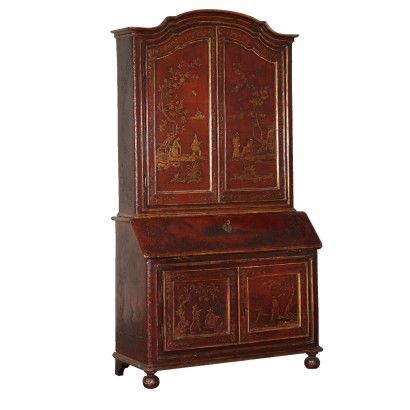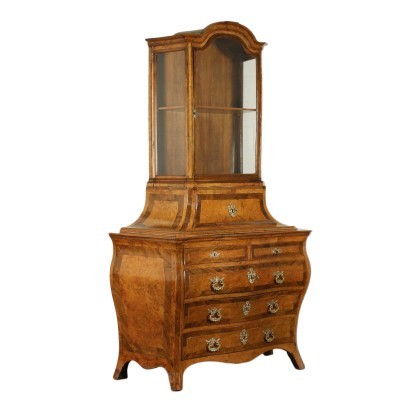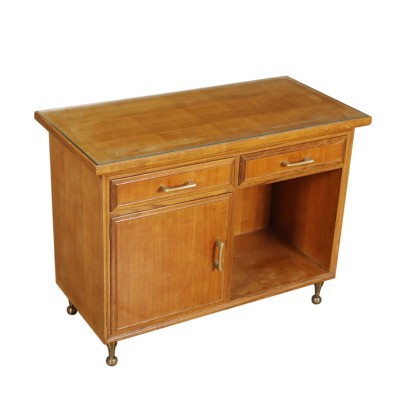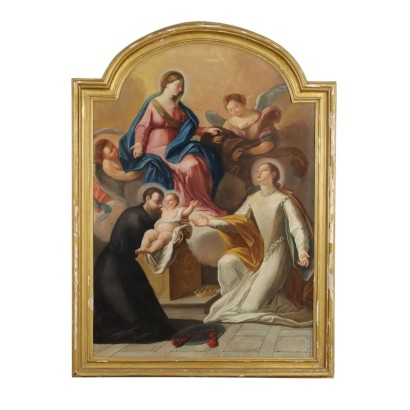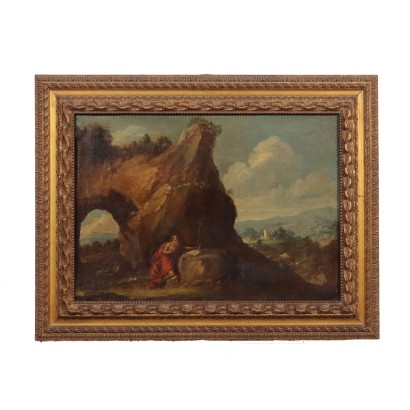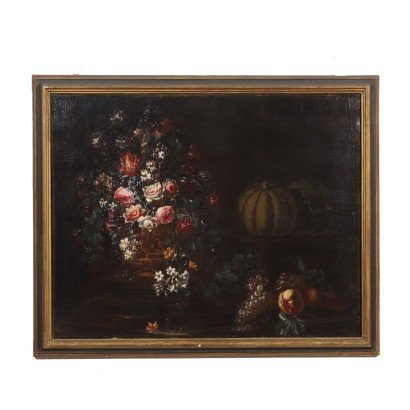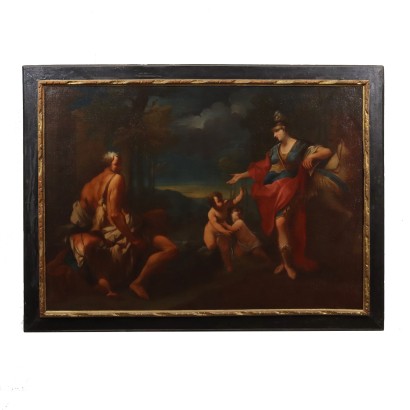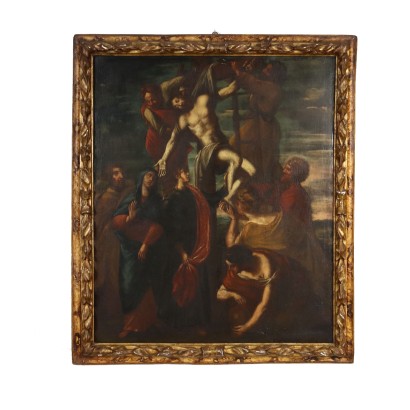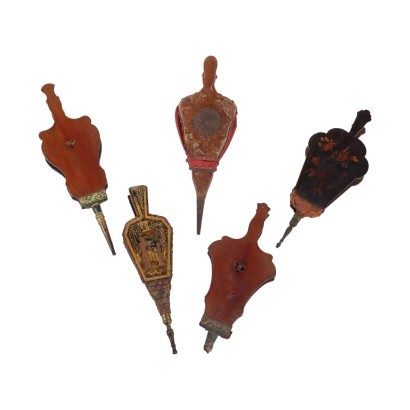Lacquered Bureau Bookcase Piedmont Italy Mid 18th Century - Trumeau lacquered chinoiserie
Features
Trumeau lacquered chinoiserie
Style: Barocchetto (1720-1770)
Age: 18th Century / 1701 - 1800
Origin: Piemonte, Italy
Main essence: Walnut
Description
Bureau bookcase composed of a cupboard with two doors and drop-leaf door with inner compartments as a base and upper case with shelves and two doors. Poplar interiors. The piece is made of walnut, completely lacquered with chinoiserie ornaments and red lacquer finish on the outside with embossed gilded figures and landscapes. The colors of the ornaments are reversed inside the cabinet with ivory as background and red lacquer figures. The drop-leaf door is decorated on the inside and on the three small drawers too. Original iron hardware (hinges and locks). Bronze key plate. The lock of the upper door is missing. Manufactured in Piedmont, Italy, mid 18th century.
Product Condition:
Fair condition. Wear consistent with age and use.
Dimensions (cm):
Height: 224
Width: 125
Depth: 52
Maximum size (cm):
Height: 224
Width: 125
Depth: 52
Certificate issued by: Enrico Sala
Additional Information
Notes historical bibliographic
The piece of furniture in question is built according to the best dictates imposed on the minusieri by the Piedmontese corporation. Piedmont is one of the few Italian realities that, under French influence, already in 1636 gave birth to the first University of Minusieri in Turin; this institution will lead to the birth of several schools and then guilds of craftsmen. A choice that will be an incentive for a high construction quality of handcrafted products in the eighteenth century. The taste of "chinoiserie" will be very widespread in the 18th century, every palace that wants to be fashionable will have a Chinese cabinet inside, think of the one designed by Juvarra for the Royal Palace or the splendid Chinese rooms of Racconigi. The furniture that adorned these rooms was lacquered with the same type of decoration, furniture much more subject to fashion than the cabinet-making furniture, it must be said, furniture at the time of construction much cheaper than those destined to last longer. fashions. These were salons or small lavatories set up according to a passing taste and which for this reason were frequently renovated to furnish them again with an updated style. These furnishings today are in great demand and rare and the reason for this rarity lies precisely in the fact that during the updates of the various architects, these pieces of furniture were replaced and deposited, when it was good, in the cellars and in the attics of the buildings; therefore they rarely arrived. to us in good condition. In those years every major European city tried to develop techniques to make lacquers as similar as possible to those from the East, often mixing them, but without ever reaching the same qualitative results. In the case of our piece of furniture, the external part presents the decorative figures in relief, made in pastiglia, a preparatory composition in kaolin and gypsum that was the background to the lacquer and allowed this relief work; the parts in relief are then gilded with leaves and protected by a sandracca which polished the colors giving a lacquering effect; the interior, on the other hand, is simply painted and lacquered without relief of the figures. The constructive analysis of the furniture studied here leads us to place the piece of furniture at least within the first half of the 18th century. presumably after the construction of the Chinese cabinet in Juvarra, in 1732, but not by much since the piece of furniture still has all the construction techniques and materials, locks and hinges typical of the beginning of the century.Style: Barocchetto (1720-1770)
With this term we designate, for what specifically relates to furniture, a part of the production carried out in Italy in the period of time between the Rococo era and the first phase of neoclassicism.It is characterized by the formal and decorative structure still rigidly adhering to the dictates dear to the Baroque period (hence the term baroque) and to the Louis XIV fashions and yet the new times are captured in the adoption of smaller volumes, more decorative modules. elegant, often directly inspired by French fashion, but always executed with rigorous principles of ornamental symmetry.
The tendency to assimilate formal and volumetric novelties but not to incorporate their ornamental elaboration finds natural explanation in Italy in the fact that in this century the great aristocracy experienced an unstoppable political and economic decline.
If in the previous century there was a great profusion of furnishings destined to adorn newly built homes, to proudly show the power of the client family, in the eighteenth century they rather take care to update the building with only the furniture strictly necessary for the new needs imposed by fashion or functional needs.
The old scenographic apparatus is maintained and the new must not contrast too much.
Find out more about the Barocchetto with our insights:
Classic Monday: discovering Barocchetto
Classic Monday: between Baroque and Barocchetto
Classic Monday elegant and unusual with two Barocchetto balustrades
FineArt: Pair of Barocchetto chairs, Venice
Emilian canterano first quarter XVIII century, first Barocchetto
Ribalta a urn, Milan mid-18th



